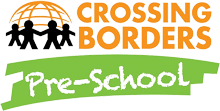At Crossing Borders Preschool, we use a comprehensive approach to language learning, utilizing several different techniques to ensure that our students become fully immersed in a language. At our language immersion preschool, we use teaching methods that have proven to be the most effective for language learning. One such method includes the total physical response (TPR) method.
What Is TPR?
TPR is a method of teaching language that associates physical movement with language. The instructor will command students to do something in the language, and students respond using their whole bodies. The intention is to promote quick understanding of the meaning behind the words, and demonstrate to students how the language is structured. This is a great way to teach new vocabulary and idiomatic terms. This has proven to be a particularly effective method with young children and adults who are new to a language when used alongside other methods.
How Was The TPR Method Developed?
TPR was developed by James Asher, a psychology professor emeritus from San Jose State University. He developed this method upon observing young children in their language development. Asher noted that when children interacted with their parents, they responded both verbally and physically. He also saw that children spent a lot of time listening to a language and understanding it before even attempting speech. From these observations, he developed three hypotheses that formed the TPR method as we know it today. First, that the brain is predisposed to language learning through listening. The second is that language learning must engage the right side of the brain in order to be effective. The third hypothesis was that stress is detrimental to the language-learning process, and that focusing on physical movement reduces stress.
What Are The Principles Of TPR?
TPR is a method from the comprehension approach to learning languages, meaning that the focus is on listening and understanding rather than speaking a language in the early learning stages. In TPR, the student is not expected to respond verbally, but may be allowed to respond in their native tongue. Most of TPR is focused on listening comprehension, and generally goes in depth on grammar, particularly verbs. The teacher commands students based on the vocabulary that needs to be learned, and the focus is on learning the meaning of words, rather than the grammatical structure. Grammar is learned through subconscious learning by exposure rather than explicitly taught. This is both a technique and a philosophy, so principles of TPR can be applied to different teaching techniques as well.
What Does TPR Look Like In A Classroom?
Most often, TPR is used in the form of drills. The teacher commands the students, and the students respond physically. They learn the meaning of the commands by observation. Once they have learned, the teacher will alter the commands to use new combinations of the word. In general, the instructor will not correct errors during class time. The instructor will only correct students after they have become more advanced in the language as to not discourage them.
What Are The Advantages Of TPR?
TPR is a great option for preschoolers because it allows them to get up and move around, as kinesthetic learning may be strongest in younger students. Additionally, it works for classrooms where there is variation in student’s comprehension levels. It is a great method for beginning students, and so is well-suited for our language immersion preschool.
The TPR method is only one of several methods we use for language instruction. Our language immersion preschool uses a variety of teaching methods to ensure that our students get the most out of our program. If you are interested in enrolling your child in our preschool in Pearland, TX, contact us today.
